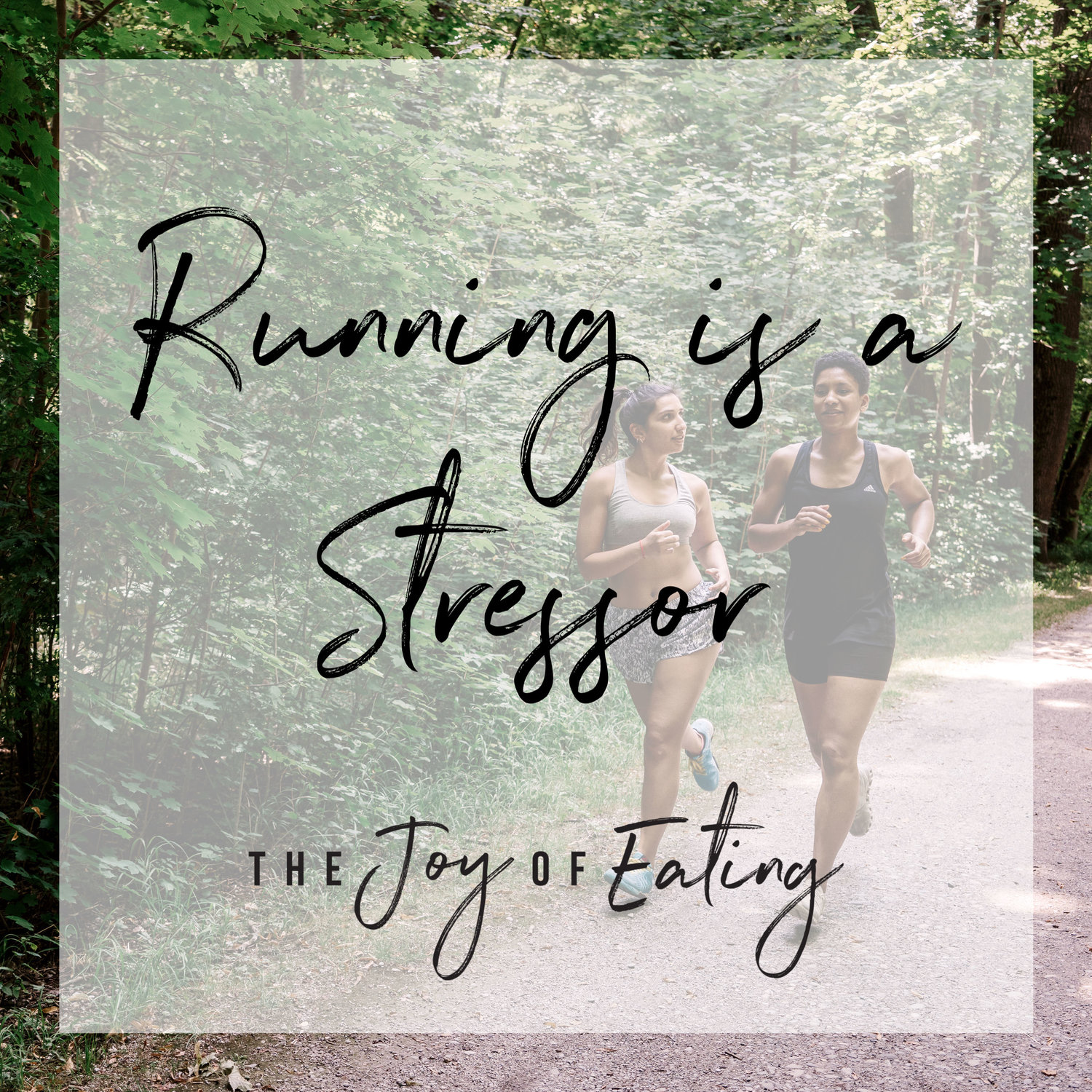
So what are the right conditions? The right condition means having enough rest and nutrition to support the acute stress from running, and allow your body to heal. This means having a relatively low stress load, or allostatic load. Allostatic load is the scientific term for the cumulative wear and tear on your body, which is caused by many different things – emotional stress, physical stress, poor nutrition (i.e. calorie or nutrient deficiencies), drug and alcohol misuse, and inadequate sleep to name a few. When allostatic load is chronically high, cortisol levels are chronically high. And when cortisol levels are already high from this chronic stress on the body, your body doesn’t experience the acute rise and drop in cortisol levels that’s so beneficial. In that situation, cortisol levels rise with intense exercise and stay elevated.
Running Safely
So what does this mean? For running to be healthy, your body needs to be properly fueled and rested. And how do you know if your body is fueled and rested enough to support more intensive exercise? It’s really hard to say! Everyone has a unique threshold of how much stress their body can tolerate. Some people are able to tolerate a high level of physical and mental stress while other people are highly sensitive to stressors, and may experience intense physical symptoms in response. This is a space where listening to your body is so essential. If you notice that you’re consistently feeling easily winded while exercising, depleted rather than energized afterwards, and having difficulty sleeping or connecting with hunger and fullness, perhaps it’s time to slow down or hit pause on running.
From a food perspective, while proper fueling looks different for everyone, generally speaking it means eating regular meals and snacks throughout the day, including fat, protein and carbs at most of your meals, and consuming an amount of food you would feel comfortable serving someone else.
We’ve internalized this idea that more exercise is always better, but sometimes less is more. I don’t have the study on me (so please don’t quote me on this) but I once listened to a sports medicine researcher who said that the life expectancy for marathon runners was about the same as it is for someone who is sedentary. That’s not to say that high milage running is always bad for you, nor is it to say you shouldn’t be running marathons (if you enjoy it, cool! We don’t have to pick activities based on life expectancy). However it was a reminder to me that intense physical activity is hard on the body. If you’re constantly pushing your body in the name of healthy, it might actually be backfiring.





More Stories
United Healthcare’s ransomware attack shows why supply chains are under siege
Nutrition Tips For Ramadan | JM Nutrition
Probiotics for IBS | The Nutritionist Reviews